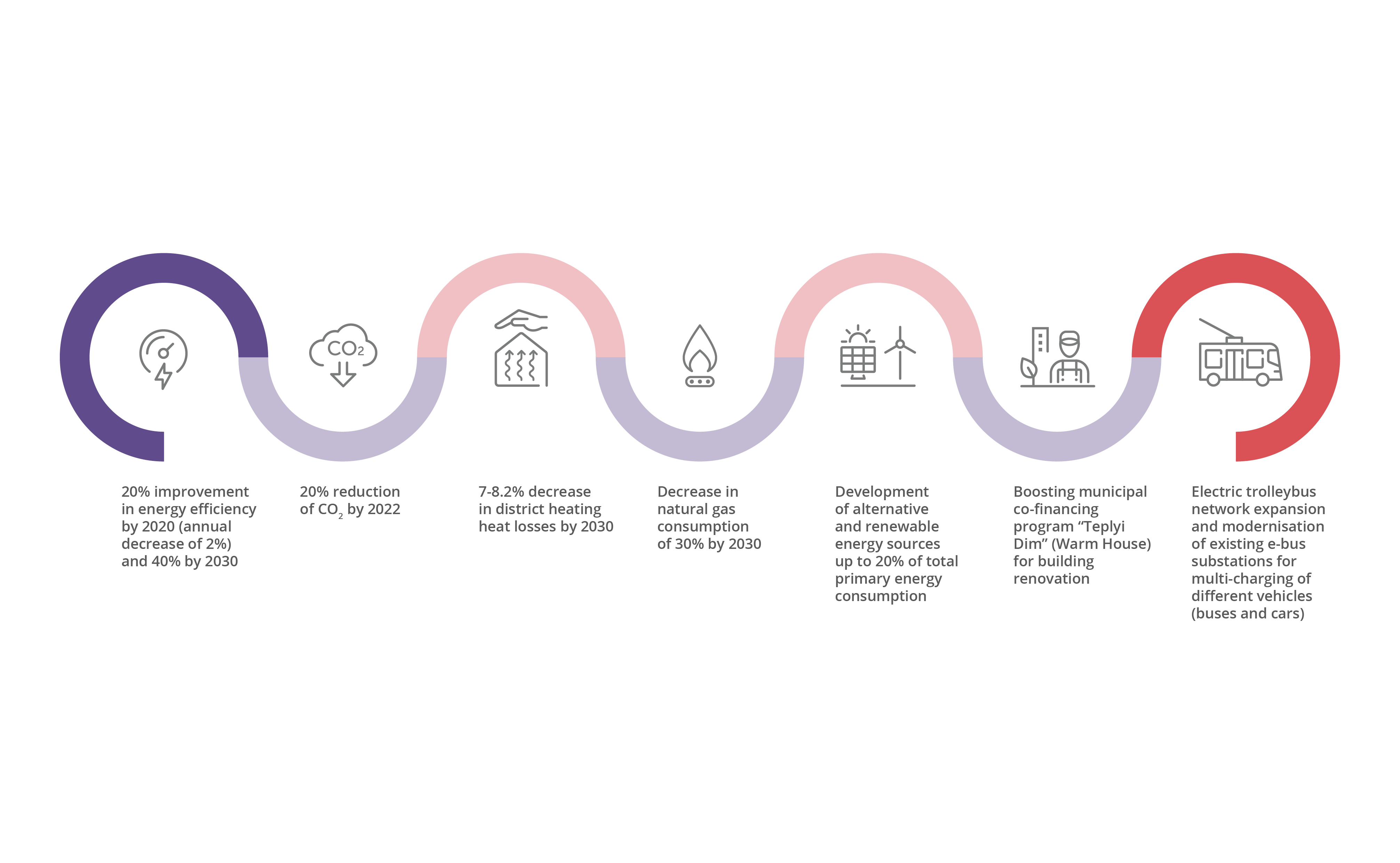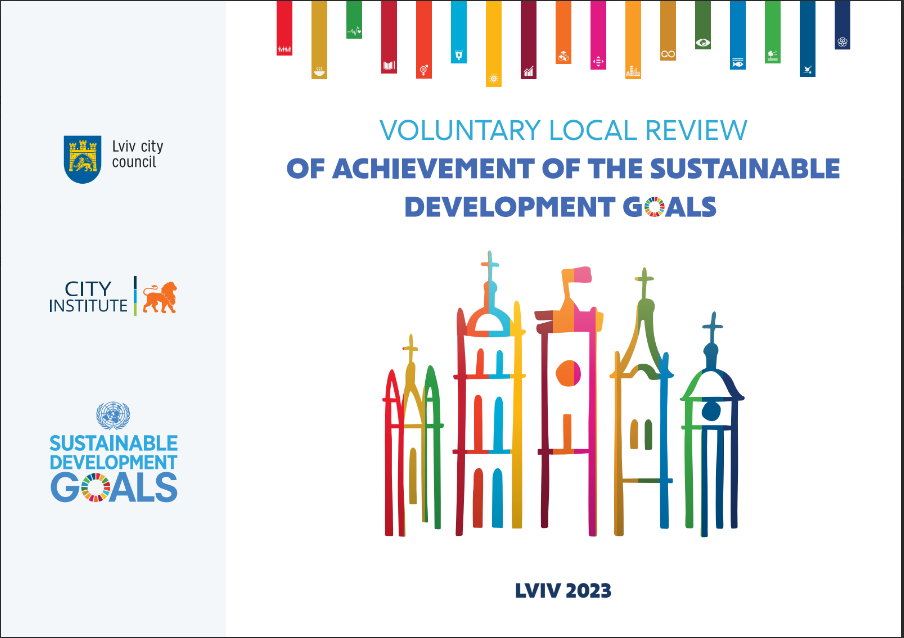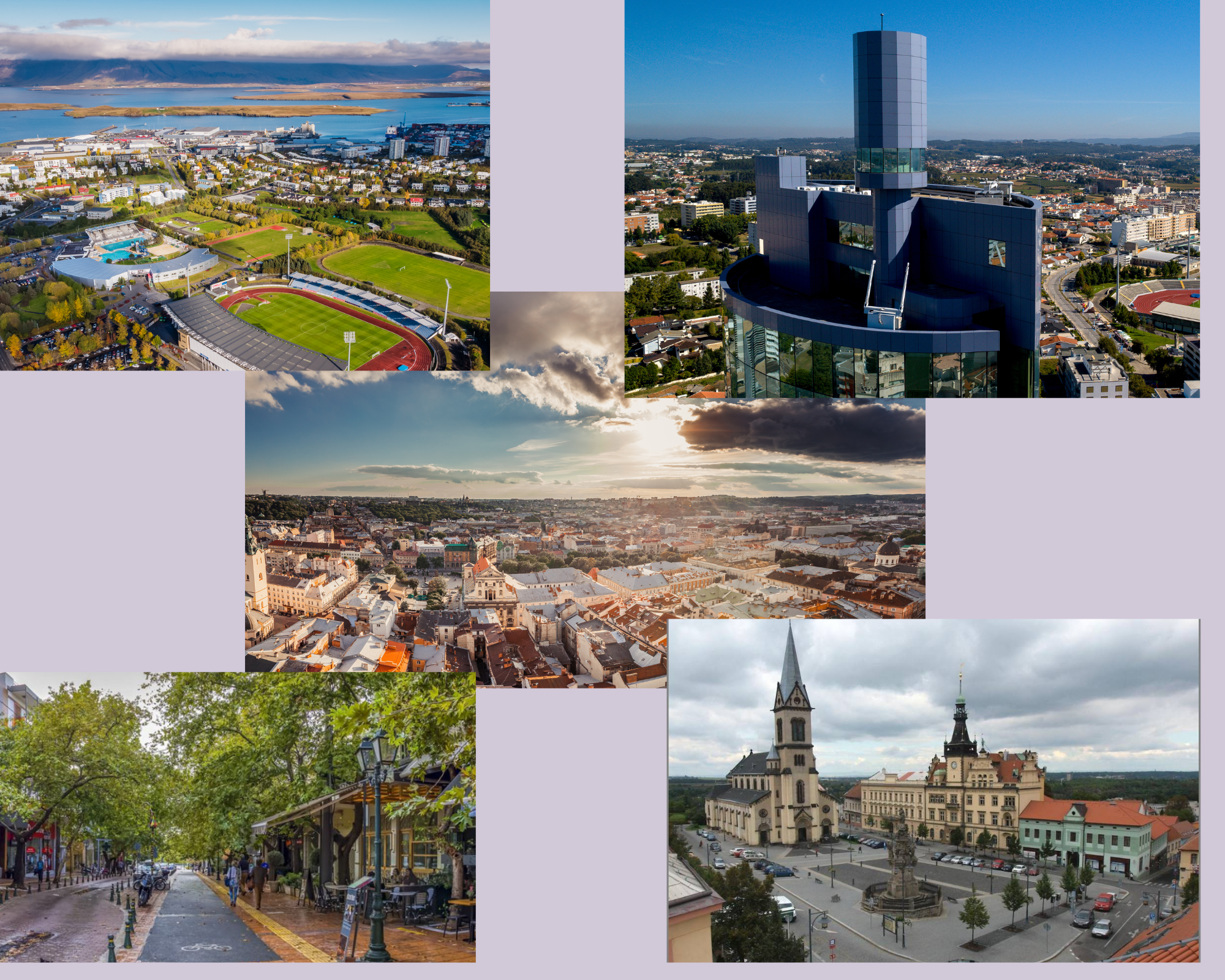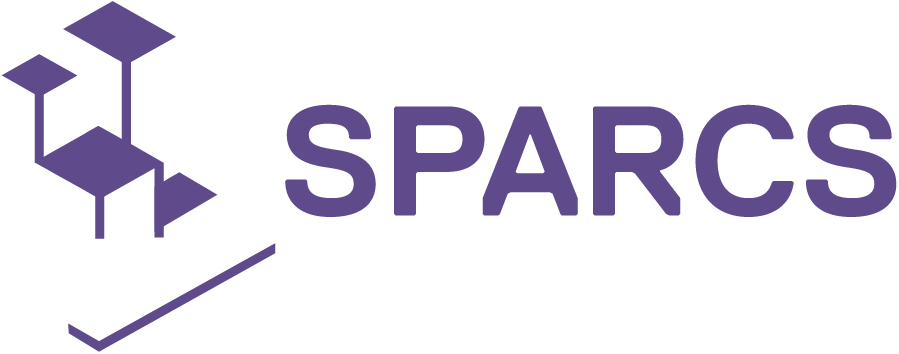Lviv
Both the SEAP and the city’s General Strategy of Development for 2012-2025 set the vision for Lviv’s future development. In addition to its CO2 and energy consumption targets, Lviv aims to increase the share of renewables to 100% by 2050.
With the involvement of municipal heating enterprises, the city will:
- create an online system to track the real energy consumption of every building,
- increase the integration of central district heating and renewable energy supply,
- increase the share of electrical mobility,
- decrease congestion,
- improve walking and cycling infrastructure.
NECU team have prepared the webpage in Ukrainian about SPARCS. We invite you to visit the website.
GOALS
- 20% CO2 reduction by 2020 (to be updated in SECAP in 2021).
- Modal split with a share of sustainable mobility modes at least 80% (including, public transport, cycling, walking and light personal mobilty) by 2030.
- Boosting co-financing programs for building renovation in energy-efficient districts to reach 20% of multifamily blocks renovated by 2030.
- Decrease in natural gas consumption of 30% by 2030.
- Increase the share of renewables in energy supply to 20% by 2030.

DISTRICT
City wide, including energy efficient districts of Sykhiv and Ryasne.
Sykhiv
Sykhiv is the most density populated district in Lviv with a population of 150 000 people. Energy efficiency of multifamily blocks in Sykhiv are the main priorities for energy transition of Lviv.
Go to Google Maps
Ryasne
Ryasne is a microcommunity Lviv divided into two multifamily block residential areas and one detached housing area. Active citizens in Ryasne are key drivers of community energy transition.
Go to google Maps
TOPICS
Urban planning and land use
Lviv intensifies urban development and preserve its historical heritage. Integrated Urban Development Concept in Lviv has a vision to create a compact “city of short distances” with natural cascades.
Energy
Lviv depends on energy for heating and electricity. City is increasing energy independence from natural gas through energy efficient measures in housing sector and diversification of energy supply.
Mobility
Lviv supports mobility needs of citizens through active and sustainable mobility modes. City is prioritizing shared mobility, e-mobility and develop green lines for cycling and walking.
Efficient city infrastructure
Urban infrastructure is a key for energy efficiency in Lviv. Lviv’s efficient infrastructure is driven by land use densification, public transport prioritization and smart energy supply management.(public transport priority, electrification of mobility, IPU, smart meter for real-time supply management)
Low-carbon energy production
Energy dependence on fossil fuels in Lviv need to be reduced for economic and security reasons. City’s and national strategies both stands for increasing the share of renewable energy production.
Transport
Transport is a key air pollutant in Lviv. City increases the electric public transport, through creating new public transport lanes, purchasing trolleybuses, trams, with promotion of active mobility.
Citizen participation
Citizens are in the center of energy transformation in Lviv. City supports citizens with awareness-raising and engage them to strategic sustainable urban development planning and management.
ICT
Lviv is the ICT center of Ukraine with a gap between business potential and municipality needs. Smart meters for energy supply/demand and traffic management will support joint data ecosystem creation.
Governance
Governance models and energy market deregulation mechanisms that will enable the co-financing of energy efficiency transformatin of buildings and integration of renewables are developing in Lviv.



